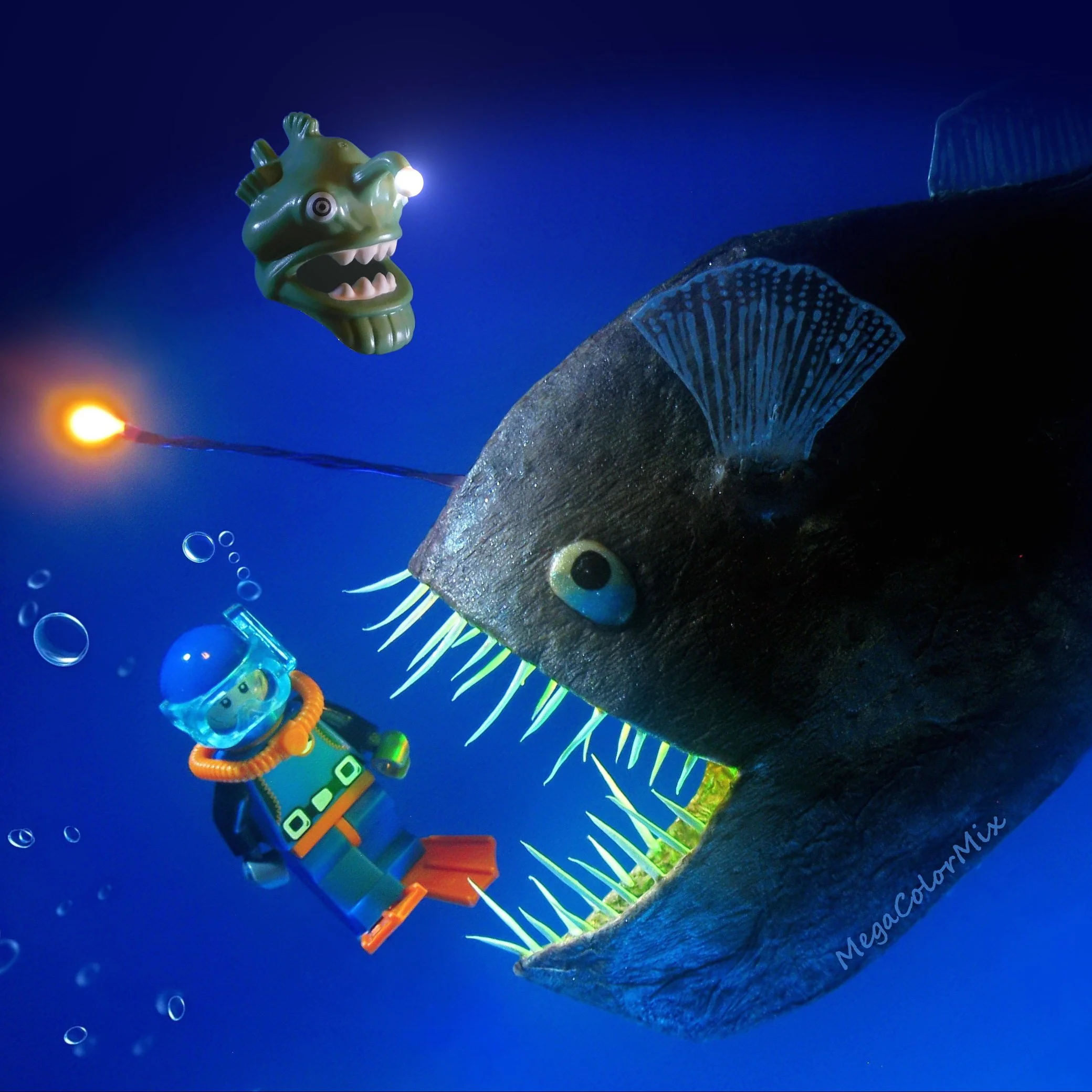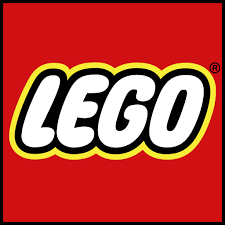Pragmatic Advice for Winning Awards at LEGO Conventions
/Today’s guest article comes from Casey McCoy, an AFOL from Chicago. You can find him online on Flickr and Instagram.
LEGO Trophies and Awards
In my last article, I covered my best tips and advice to become a better builder by learning new techniques, receiving constructive criticism, and joining a LEGO community. If you recall from ‘My Story,’ part of my motivation to get better was to catch up to my friends who seemed to “effortlessly” win or be nominated for awards at LEGO fan conventions.
So naturally, after my experience at more than twenty LEGO conventions, I’ve thought a lot about how to approach awards and interpret my (and others’) convention performance. I hope to pass down a helpful thing or two, as this is my purely pragmatic advice on how to win awards. But before we get there, we have to get one thing straight…
The Nature of Awards
Ask 100 AFOLs about their thoughts about awards and you’ll get 100 different answers. Some think they’re great and vital to the hobby. To some, awards are a complete afterthought. Some think they’re inherently problematic and sully the hobby. Some might even scoff at the very concept and think there’s no place for them in the hobby! (This same camp may find an article such as this one to be ridiculous!) Everyone is entitled to their opinion.
My guiding principle is that fundamentally, people should be able to enjoy the hobby in whatever way they like. Do I particularly care for the “influencer-ification” of the hobby in the last five years? Not particularly. But people are allowed to enjoy the hobby as they see fit, and I don’t have to run in those circles if I don’t want to.
The same thing applies to awards. So, if you’re interested in awards, there’s nothing wrong with that or with you. Don’t let others bully you out of what you find enjoyable about the hobby (and that goes for every facet of the LEGO community). If you are interested in their history and diversity, check out this other stellar BrickNerd article about LEGO convention trophies. But back to this article, why are you interested in awards?
What Motivates You to Win an Award?
Personally, if I never had the “carrot on the stick” in the form of awards, I likely would have never pushed myself past where I started in the hobby. I’m a fundamentally competitive person, and while competitions have certainly resulted in drama and controversy, I think the overall community growth and ever-increasing build quality in the LEGO community are a positive net gain.
Custom trophies from BrickCon
You can really be motivated for any reason, but my best recommendation is that you check your ego and emotions at the door. While it is very nice to receive an award and get recognition from your peers for all the hard work, you also must walk into each show and know that if you don’t win (or get nominated), things are still to be OK. Like I said, I’m not going to tell you how to enjoy the hobby, but ideally, it should be about having fun at the end of the day. Otherwise, why do it at all?
So without further ado, let’s look at that pragmatic advice for winning trophies at LEGO fan conventions.
Seven Tips to Help Win LEGO Trophies
Throughout the rest of this article, I will use Brickworld Chicago as a use-case study as it’s been my home show for over 12 years, but I’ve been to shows in the South, Midwest, and Canada. Experiences will vary from region to region.
1. Know the Show
If the LEGO show has an awards system and is even semi-competent, the exact qualifications for the competitive build categories should be listed on the website with descriptions for the category you want to build and compete in. Visit the website and review the descriptions in detail.
Some of these category descriptions may be long… some may be short. Some categories might be very similar to others. In any case, pay attention to the fine print. For example, Best Mecha at Brickworld has been defined in years past as needing a pilot for a “giant robot MOC” to be considered a mecha. Don’t claim ignorance!
Choose something off the list and pick a goal.
Once you have read over the qualifications in detail, pick a category to shoot for and build with an end category in mind.
Note: One of the judges’ toughest roles may be trying to award a build that doesn’t quite land in any pre-existing category. Most people when they build just for themselves might not know what category to register a MOC when they show it at a LEGO convention. Building for the category in the first place helps prevent this.
2. Know Your Competition
Who is your competition? This is easier to have a grasp on once you’ve been to a show a couple of years in a row. However, an AFOL you know and trust may be able to give you an overview of the players in the “meta” at a given show.
For example, going into Brickworld Chicago, I know a builder like Nick Jensen is going to be a contender for Best Replica, E.J. Bocan is going to be a contender for Best Mosaic, Tom Jacobsen is going to be a contender for Best Star Wars, Eurobricks is going to be a contender for Best Group Layout, etc.
Once you know who the competition is, scope them out and track their build(s). Most people tend to post their work-in-progress shots (WIPs) on their Instagram or Flickr. Examine these sources of information. What are they doing that works? What are they doing that doesn’t work? What can you learn and glean from these high performers?
Ben’s builds and their respective winning years.
I was nominated twice for Best Medieval Building at Brickworld Chicago and lost both times to Ben Pitchford. In both instances, whether I liked it or not, I had to stop and think about what Ben did better in his MOCs over mine. You can bet I keep an eye on what he builds throughout the year!
3. Know the Judging Methods
Each show is going to be different. Shows may elect judges to make all rulings, and others may let all attendees simply vote. Other shows, like Brickworld, do a combination of the two with judges nominating and attendees voting on the nominations.
Knowing what appeals to the specific judging styles helps. For example, judges, in general, tend to favor composition, techniques, and aesthetics. The masses tend to like big stuff. You may want to tailor your build according to the audience that will receive it. At a show like Brickworld Chicago, you would need to thread the needle of having appeal for both sides.
Note: In my experience, a lot of nominations or award “snubbing” may be unintentional. Judging is a very challenging task, and there are so many fantastic models in the room at every show. Judges may not be able to see and comprehend all the work you but into a build. Always control what you can and leave the rest to fate.
4. Make a Unique “Artistic Statement” Build
So far the advice given has been pragmatic, but there’s something to be said for not compromising your artistic vision. Take in all the contextual information of the show, but make your build a pure expression of your unique authorial voice as a builder. What may make your LEGO model stand out in the room is that your build is not like anyone else’s in the room.
The best convention performance I’ve had has been for a build that I feel is undeniably the most ‘me’. A pastiche MOC based on that year’s trends could have you blending in with the crowd.
5. Don’t Sacrifice Detail for Scale
It’s often said, “Go big or go home.” But in the LEGO convention space, the golden rule I’ve observed is ‘Go big without any detail and go home without trophies.’ When you go big without detail, it is noticeable.
I find many new builders have a preconceived notion that big builds must automatically be better than smaller builds. Don’t be so sure. Having a large build without detail is glaring once you’ve been in the hobby for a while.
One of my inspirations, Ryan McNaught (Brickman), said something on LEGO Masters Australia to the effect of, “You’ve grabbed my attention and you’ve held it.” This is at the essence of what will enrapture the purview of judges and the public. Some of the best MOCs ever made are fully immersive worlds that grab your attention with their grandiosity and then hold it with detail.
The best example of this that I can remember was New Hashima at Brickworld Chicago 2023. (Read more about New Hashima in a whole series of articles here at BrickNerd.) While insanely massive, every square inch was dressed to the nines and oozing with details:
Note: Competition categories that are designed for small MOC entries need not apply here, but they obviously still need detail.
6. Lay Out Your Builds Aesthetically
What is the primary direction or angle that people will come up and see your builds from? Is the build visible from all sides? Do you even want the build to be visible from all sides? Build with the end goal of how it will be viewed in mind.
One of my tables from 2023
If you know that the backside of your MOC will be facing a wall, you don’t need to invest the time or energy into making that pretty. If you know the backside will be visible, maybe you should spend some time making sure it’s presentable.
You could have the best build in the world, but if it’s not properly displayed, no one will know. Autumn Shore Castle by Philip and Maria Straatsma is an example of this done right. It won Best Individual Layout 2023 at Brickworld Chicago. The build was completely polished on every side and was on an island table that was viewable from all sides.
Make sure the area around your presentation is polished. Make sure no trash (food, bags, wrappers) is left around your builds, your MOC card is intentionally placed, and your larger MOCs do not cover your smaller MOCs in any way. These tips will also make the viewing experience for the public attendees that much more enjoyable.
7. Remember, This is a Children’s Toy
For my last tip, we are going back to the beginning. I don’t mean to downplay or belittle the very hobby that I’ve found so much joy in, but having a little plastic trophy for your build is not worth ending friendships or leaving the hobby. We come together at shows out of love for the hobby.
Consider how you interact with others and their performance—it’s OK to maintain friendly rivalry and be a good sport. Aim to be humble in victory and gracious in defeat. You will lose more than you will win. And at the end of the day, you have built a LEGO model that you are proud of and are attending a LEGO fan convention with LUG mates, friends and more.
The Brickworld Family circa 2022
After all, maybe the real awards were the friends we made along the way?
I hope you’ve gleaned a thing or two on how to “up your game” next time you’re at a LEGO show or convention. The devil’s really in the details, and we really went into the weeds with this one. So, what are your thoughts? Was this helpful? What has been your experience with awards at conventions? Let us know in the comments, good luck building, and make sure to check out other articles about awards here or here on BrickNerd.
What do you think is important to do when trying to win awards? Let us know in the comments below!
Do you want to help BrickNerd continue publishing articles like this one? Become a top patron like Marc & Liz Puleo, Paige Mueller, Rob Klingberg from Brickstuff, John & Joshua Hanlon from Beyond the Brick, Megan Lum, Andy Price, Lukas Kurth from StoneWars, Wayne Tyler, LeAnna Taylor, Monica Innis, Dan Church, Roxanne Baxter, and Steven Laughlin to show your support, get early access, exclusive swag and more.





























